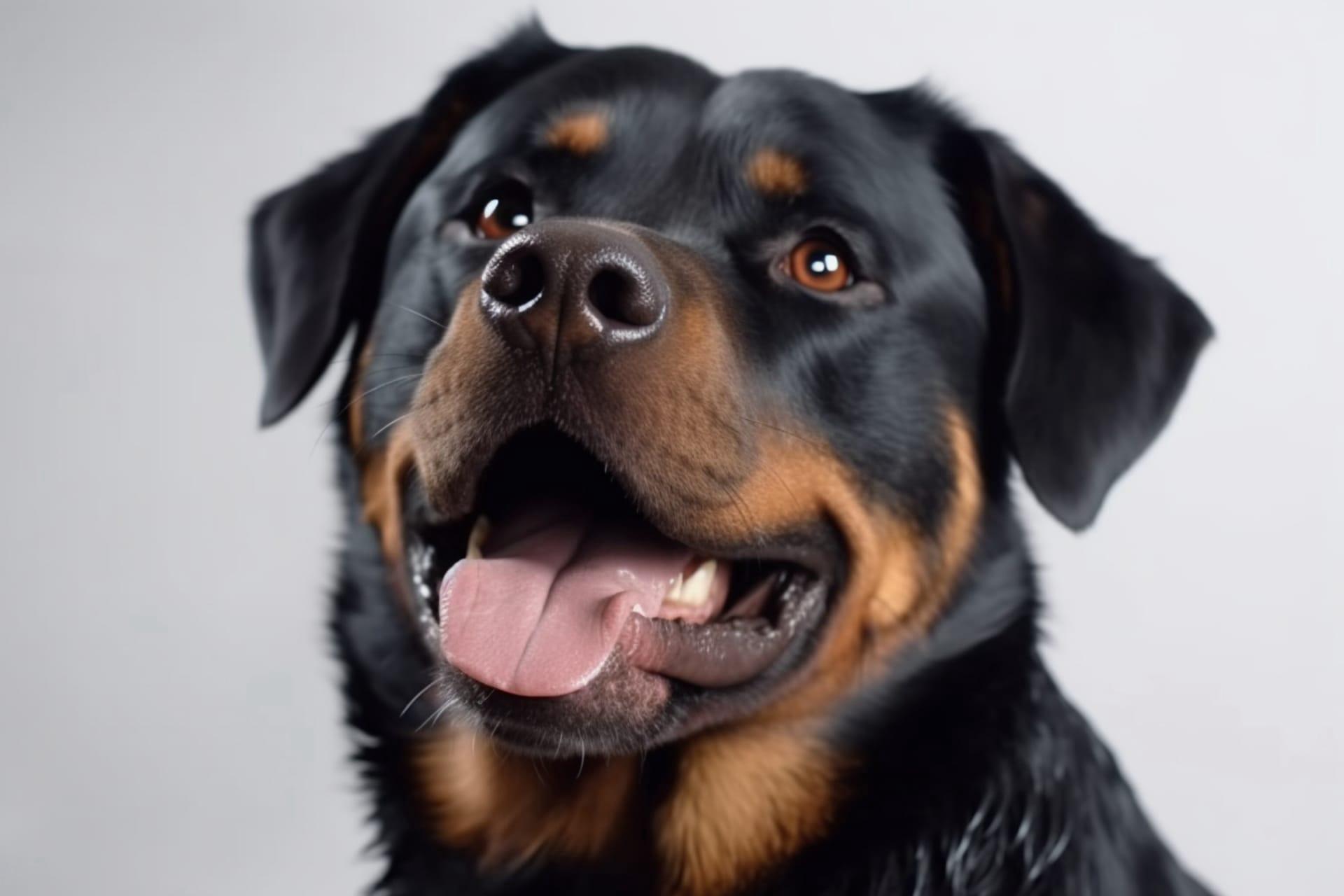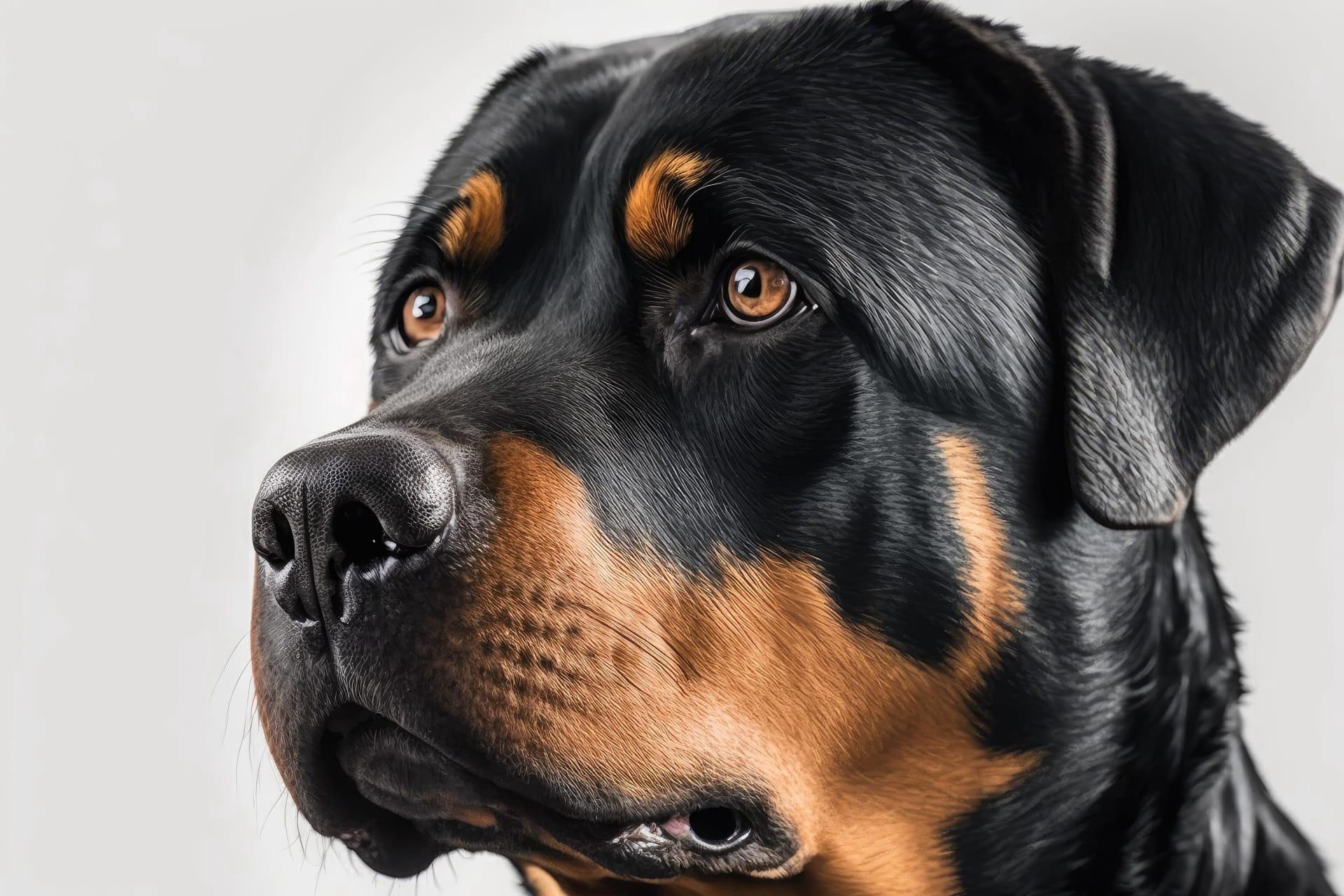1
Rottweilers, with their origins tracing back to the Roman Empire, were initially bred for herding livestock and pulling carts laden with butchered meat to market. This historical role has endowed them with a muscular build and a powerful jaw, designed for both control of cattle and protection. A full-grown male Rottweiler can weigh up to 135 pounds (around 61 kilograms) and stand about 27 inches (approximately 69 centimeters) tall at the shoulder, showcasing their impressive stature that was necessary for their early duties.
The distinctive black and mahogany coat of the Rottweiler isn't just for looks; it served a functional purpose in their early days. The dark color helped to absorb heat from the sun, keeping them warm in cooler climates, while the dense, medium-length outer coat provided protection against the elements and brush as they moved through varied terrains. This combination of features made them exceptionally suited to the outdoor, labor-intensive tasks they were originally bred for.

2
Rottweilers have a remarkable bite force, one of the strongest among dog breeds, which can exert up to 328 pounds of pressure per square inch. This powerful bite was essential for their role in managing cattle, allowing them to assert control without causing harm. This strength also makes them effective in roles that require a high level of protection and defense.
Despite their tough exterior, Rottweilers have a reputation for being fiercely loyal and affectionate with their families. They are known to form strong bonds with their owners and can be very protective of their home environment. This loyalty and protective instinct make them excellent family pets, provided they receive proper training and socialization from a young age to channel their protective nature in a positive manner.

3
The intelligence of Rottweilers is often underrated. They rank within the top 10 for canine intelligence, making them highly trainable and capable of performing a wide range of tasks beyond their historical roles. This intelligence, combined with their natural willingness to work, has made them popular choices for police, military, and search and rescue operations across the globe.
Rottweilers require a significant amount of mental and physical stimulation to stay healthy and happy. A bored Rottweiler can become destructive, so it's important for their owners to engage them in regular exercise and training activities. Activities like obedience training, agility courses, and even simple games like fetch can provide the necessary stimulation to keep their minds sharp and bodies in good condition.

4
The life expectancy of a Rottweiler ranges from 8 to 10 years, which is typical for a dog of its size. This relatively short lifespan is attributed to the breed's susceptibility to certain genetic health issues, such as hip dysplasia, heart problems, and certain types of cancer. Responsible breeding practices and regular veterinary care can help mitigate these risks and ensure a healthy life for these dogs.
Rottweilers have a double coat, with a short, dense undercoat and a longer, coarser outer coat. This double layer not only provided protection against harsh weather conditions but also helps to regulate their body temperature in both hot and cold environments. Shedding is moderate but can be more pronounced during the spring and fall, requiring regular grooming to keep their coat in good condition and to minimize shedding around the house.

5
Historically, Rottweilers were known as "Rottweil butchers' dogs" because they were used to herd livestock and pull carts laden with butchered meat to market in the German town of Rottweil. This utilitarian role is a testament to their versatility, strength, and endurance, traits that are still admired in the breed today.
Rottweilers are known for their calm and confident demeanor, which can sometimes be interpreted as aloofness. However, this reserved nature is coupled with a keen awareness of their surroundings, making them excellent watchdogs. They are not quick to bark, but when they do, it's often for a good reason, which makes their alertness a valuable trait for those seeking a dog with a protective instinct.